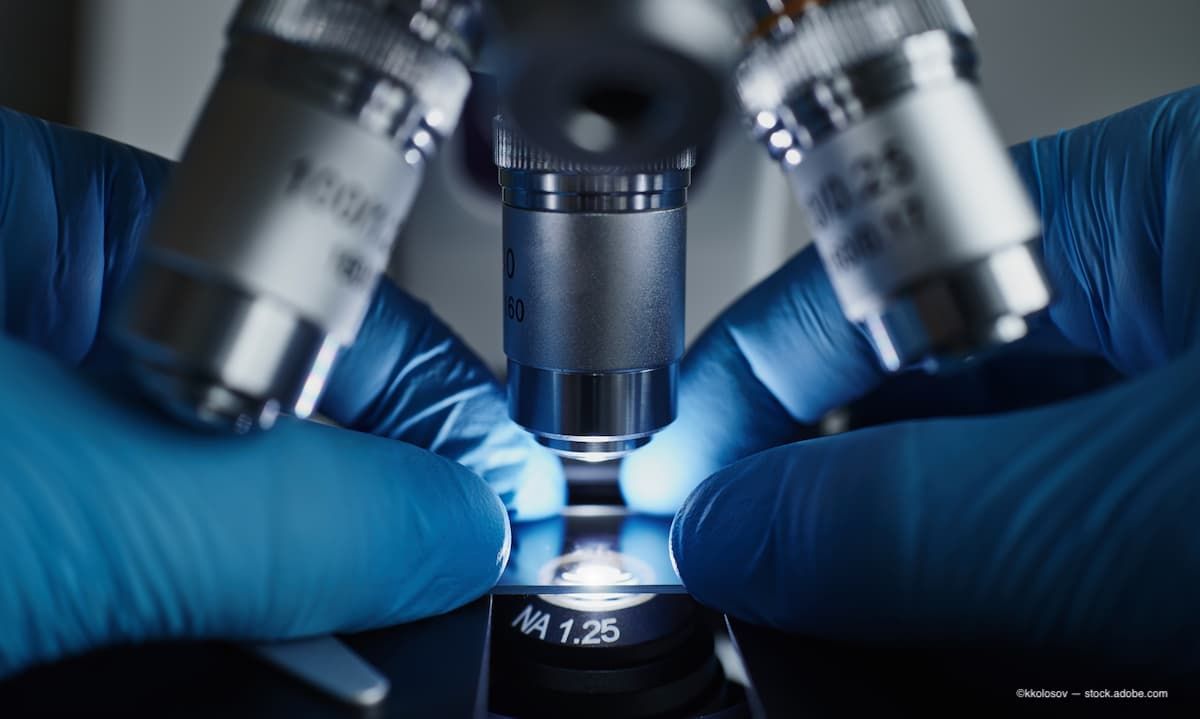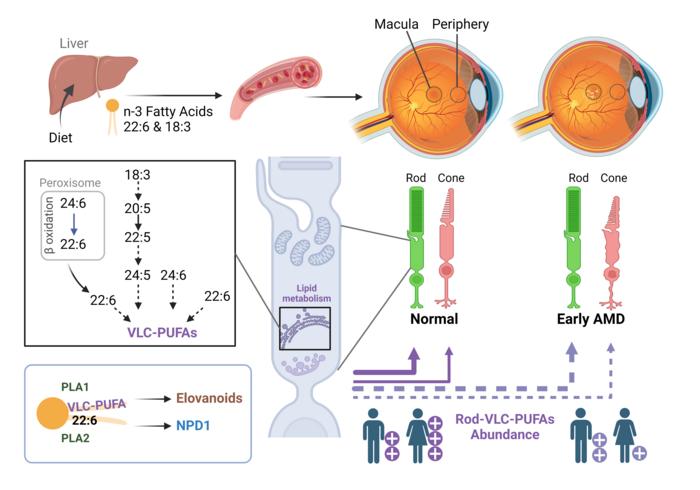News
Article
Study: Researchers discover a key failure in AMD that may lead to progression and vision loss
Author(s):
According to the Louisiana State University Health Sciences Center, elovanoids have been shown to restore the structure and integrity of damaged photoreceptor cells by repairing, remodeling and regenerating healthy cells.
(Image Credit: AdobeStock/kkolosov)

A team of researchers has found that age-related macular degeneration (AMD) decreases an essential fatty acid, preventing the formation of a class of protective molecules and reducing repair potential. The discovery may also open new therapeutic avenues for AMD.
The findings of the study were published recently in Experimental Eye Research.1
The study was led by Nicolas Bazan, MD, PhD, Boyd Professor, Ernest C. and Yvette C. Villere Chairperson for the Study of Retinal Degeneration, and Director of the Neuroscience Center of Excellence at LSU Health New Orleans School of Medicine,
The study shows that AMD decreases peripheral retinal docosahexaenoic acid (DHA) 22:6 in rod photoreceptor cells, limiting the elongation of fatty acids to form very-long-chain polyunsaturated fatty acids (VLC-PUFAs). VLC-PUFAs are precursors of elovanoids, bioactive chemical messengers made from omega-3 very- long-chain polyunsaturated fatty acids.1
According to a news release from the Louisiana State University Health Sciences Center, elovanoids, discovered by the Bazan lab, have been shown to restore the structure and integrity of damaged photoreceptor cells by repairing, remodeling and regenerating healthy cells. The loss of the neuroprotective precursors of elovanoids in the retina periphery from AMD facilitates uncompensated stress and cell loss, according to the LSU news release.
“Biosynthetic fatty acid pathway insufficiencies may be a fundamental factor in the onset and progression of macular degenerative diseases leading to blindness,” Bazan said in the news release. “These findings open important immediate avenues for therapeutic exploration for AMD.”
A graphical illustraton of AMD VLC-PUFAs. Image courtesy of LSU Health New Orleans

Moreover, the researchers also uncovered key differences between genders. According to the National Institutes of Health, 66% of AMD-affected persons are female. Females have higher DHA 22:6 than males because of estrogen effects. As they age and estrogen decreases, so does DHA 22:6, and as a result, women can become increasingly susceptible to retinal degeneration.1
“In AMD, the female retina loses peripheral rod VLC-PUFAs to about 33% less than in males, limiting elovanoid formation and its protective bioactivity,” Bazan added in the news release.
According to the Bright Focus Foundation, nearly 20 million US adults have some form of age-related macular degeneration.2
The foundation noted in its study an estimated 18 million people aged 40 and older were living with early-stage macular degeneration in 2019, and 1.49 million had late-stage macular degeneration. Around 200 million people worldwide are thought to be living with AMD, a number expected to reach 288 million by 2040.2
Moreover, the study noted that age is a key risk factor for age-related macular degeneration. The risk of getting advanced age-related macular degeneration increases from 2% for those ages 50-59, to nearly 30% for those over the age of 75. The direct health care costs of visual impairment due to age-related macular degeneration in the US, Canada, and Cuba are estimated at $98 billion.2
Reference:
William C. Gordon, Marie-Audrey I. Kautzmann, Bokkyoo Jun, Megan L. Cothern, Zhide Fang, Nicolas G. Bazan. Rod-specific downregulation of omega-3 very-long-chain polyunsaturated fatty acid pathway in age-related macular degeneration, Experimental Eye Research, Volume 235, 2023, 109639, ISSN 0014-4835, DOI: https://doi.org/10.1016/j.exer.2023.109639.
Bright Focus Foundation, Nearly 20 Million American Adults Have Age-Related Macular Degeneration, New Data Shows. Published January 3, 2023. DOI: https://www.brightfocus.org/news/nearly-20-million-american-adults-have-age-related-macular-degeneration-new-data-shows
Newsletter
Don’t miss out—get Ophthalmology Times updates on the latest clinical advancements and expert interviews, straight to your inbox.




